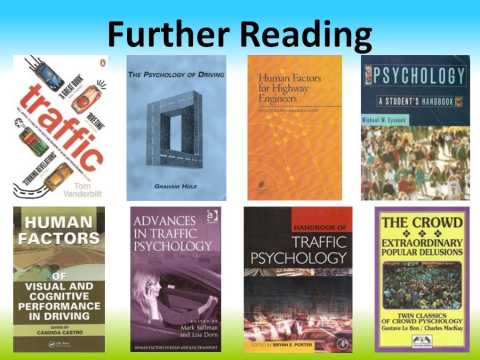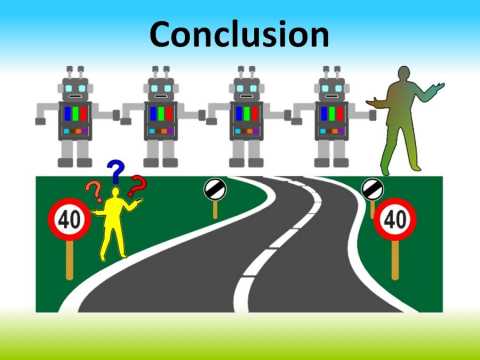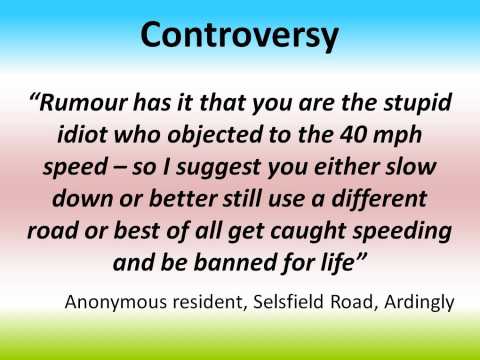 |
Much of the information in this presentation came from these books:
(i) 'Traffic' by Tom Vanderbilt (ISBN 978-0-141-02739-5) is an excellent non-technical examination of why road users behave the way they do, covering diverse topics such as perception, robot controlled cars, the psychology of congestion and commuters, different behaviours in other countries, and estimating risk
(ii) 'The Psychology of Driving' by Graham Hole (ISBN 0-8058-5978-0) is a more in-depth look at topics such as perception, attention and distraction, risk, fatigue, old age, and what's in store in the future
(iii) 'Human Factors of Visual and Cognitive Performance in Driving' edited by Candida Castro (ISBN 978-1-4200-5530-6) is an in-depth look at topics including how our vision works, the effects of various road design elements, and the science of not getting hit
(iv) 'Human Factors for Highway Engineers' edited by Ray Fuller and Jorge A. Santos (ISBN 0-08-043412-6) is another in-depth look at topics like ergonomics, driver training, self-explaining roads, vision, perception, mental workload, young pedestrians and cyclists, and elderly road users
(v) 'Advances in Traffic Psychology' edited by Mark Sullman and Lisa Dorn (ISBN 978-1-4094-5004-7) is an in-depth look at topics such as driver personality, emotions and stress, distractions and inattention, vulnerable road users, hazard perception and risk, and in-vehicle technologies
(vi) 'Handbook of Traffic Psychology' edited by Bryan E. Porter (ISBN 978-0-12-381984-0) is an in-depth look at topics including variations in mental models, neuroscience, mental health and driving, speeding, young children, motorcyclists, driver education, enforcement, and road use behaviour in Sub-Saharan Africa
(vii) 'Psychology - A Student's Handbook' by Michael W. Eysenck (ISBN 0-86377-475-X) is a comprehensive reference book for general psychology, not just traffic psychology
(viii) 'The Crowd - Extraordinary Popular Delusions - Twin Classics of Crowd Psychology' by Gustave Le Bon and Charles MacKay (ISBN 0-934380-23-6) is a partial reprint of two famous books on crowd psychology, first published in 1841 and 1897 |




